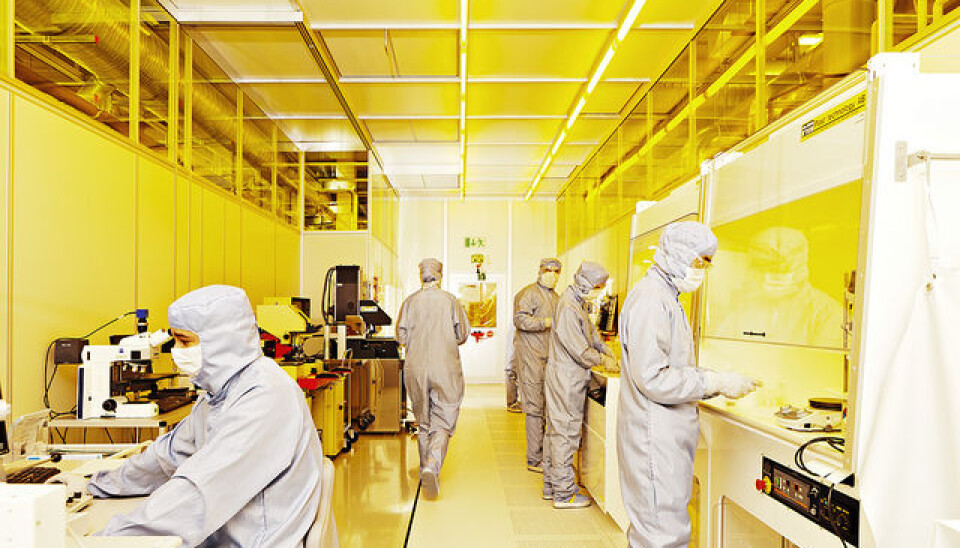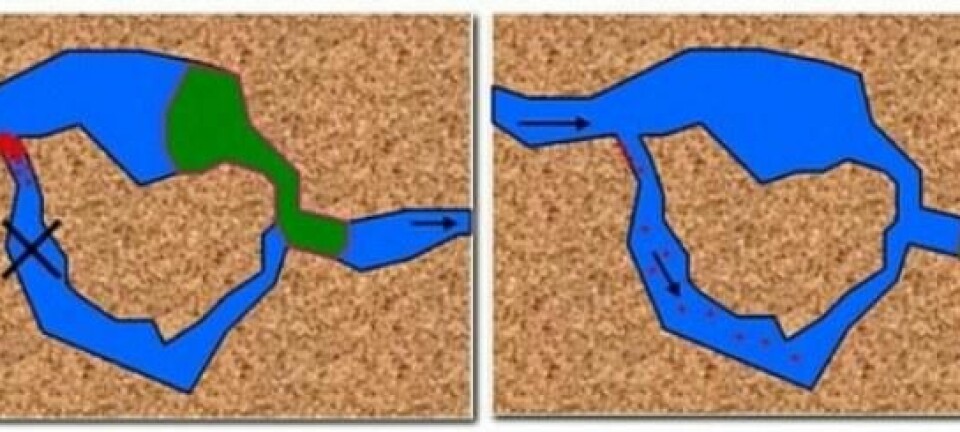An article from Norwegian SciTech News at NTNU

When the oil runs out, the age of tiny things begins
Norway may have to depend on nanotechnology as its main source of income in the future. Nanotechnology is all about creating custom materials on a tiny scale that allows for incredible possibilities in the real world.
Denne artikkelen er over ti år gammel og kan inneholde utdatert informasjon.
Nanotechnology is THE technology of the 21st century — and is currently the fastest growing technology in the world. New materials with incredible characteristics, more efficient solar cells, and smart medicines that find diseases on their own are all examples of projects in the works.
“After oil comes nanotechnology. This is the future of innovative products and new industries,” says Kay Gastinger, director of NTNU’s NanoLab.
Popular engineering programme
NTNU has started a strategic initiative that will help build the foundation for Norway’s future in nanotechnology. The NanoLab is currently celebrating its 10th anniversary. Over the past decade, the number of nano-researchers at NTNU has increased dramatically. An engineering programme has been established, the new lab has been built.
The university’s five-year master’s programme in nanotechnology has become one of the most popular study options in Norway – and consequently, one of the most difficult programmes in the country to gain admittance to. During the semifinals of this year’s Researcher Grand Prix, where PhD students compete to make the most entertaining and understandable presentation of their research, five of nine semifinalists from NTNU had nanotechnology as their focus.

So far, the university has spent around NOK 265 million to build the NTNU NanoLab, which is comprised of a clean room laboratory and accompanying facilities. The financing was divided between NTNU, which was responsible for the actual building of the lab itself, and the Research Council of Norway, which paid for most of the equipment. The clean room is about 700 square metres, and is filled with advanced equipment and several powerful microscopes. It is nearly completely dust-free, and the floor is cleaned with alcohol every day.
The lab is open for use for students and researchers at NTNU, SINTEF, and third parties, and is used by almost 200 researchers annually. This makes it the most used nanotech laboratory in Norway.
The NTNU Nanolab is also the lead institution for NorFab, the Norwegian Micro- and Nanofabrication Facility. The Research Council of Norway has supported NorFab’s first project period with NOK 70 million. The application for the next period, 2015-2019, is currently being processed.
Nano in many fields
So far, the lab has been used to develop better solar cells, uniquely designed materials, tiny data storage devices, and cancer medicines.
Using nano-capsules filled with cancer medication, researchers have had success in attacking malignant tumours with surgical precision.
Another research group is the first in the world to develop and patent a method for using graphene as a framework to grow III-V semiconductors, which could make the use of silicon in electronics obsolete.
In a few years, Norwegian researchers may be at the forefront of developing nanotechnology for use in the petroleum industry.
Combining techniques
Today, nanotechnology can be found in our computers, music players, sensors, self-cleaning windows and cosmetics. These products all use nanotechnology to improve current technology, but the research being done at NTNU is also working to develop completely new technologies.
Nanotechnology spans many fields of study, such as physics, electronics, biology, chemistry and materials technology. When you study and manipulate things at a nano-scale, the borders between these fields begin to blur.
The greatest potential in nanotechnology is found in combining techniques from different disciplines. You could say that nanotechnology is an enabling technology— a tool that makes all sorts of new processes possible.
“It’s really exciting to bring together researchers from all different fields of study. That’s where all of the most groundbreaking work is being done— between fields,” Gastinger says. “The NanoLab is meeting place for researchers with roots in traditional fields such as materials technology, physics, electronics, chemistry, biology and medical technology.”
How big is a nanometre?
The prefix nano- means one billionth, and indicates a size in the same way as centi-, deci-, and kilo- do. When we talk about a centimetre, what we actually mean is a hundredth of a metre. So one hundred centimetres make a metre— as do one billion nanometres. Mathematically, we say that a nanometre is 0.00 000 0001 metres, or 10-9 metres. The distance of one nanometre contains about 5-10 atoms, so when we talk about nano-scale (about 0.1-100 nm), we’re on the atomic level.
Comparing the size of an atom to a human is like comparing the size of a human and the sun.
Tailoring characteristics
Nanotechnology is the study of phenomena that occur on the nano-scale, and how we can control and manipulate these phenomena. To be able to say that a product contains nanotechnology, it needs to have elements with a structure that is controlled or manipulated at a nano-level.
The result is that you can make materials that have completely new characteristics— materials that are hard and but very lightweight, or thin but insulating.
Nanotechnology allows us to build new materials atom by atom, and customize their characteristics based on what we need. The incredible possibilities that this leads to are the reason that the interest and use of resources on nanotechnology has soared in the past few years.
Copying nature
The gecko is a strange little creature that has intrigued scientists for years. A gecko can walk around on walls and ceilings, regardless of what kind of surface it is on, and will never fall. It has a unique structure of tiny hairs that branch out down to a nano-scale on its feet, which allows it to defy gravity and climb wherever it likes.
Nature is often the best example of nanotechnology that really works. A great deal of the research being done today is looking at how natural nanostructures work, and how we can copy them for our own uses. The structures on gecko feet can be used to design elastic bandages that stick to wet surfaces as well as dry ones, for example.
Video: Watch researchers play tic-tac-toe on a strand of hair
Ethical dilemmas
Nanotechnology has both pros and cons. New possibilities are constantly being discovered, but there are plenty of challenges that need to be overcome as these technologies and products are developed. Working at a nano-scale puts enormous demands on both tools and researcher expertise. To be able to understand what is possible, we need to have a solid understanding of how the world works at the nano-scale, and what tools are available.
Many of the possibilities offered by nanotechnology require thinking outside of the box to be realized. Nanotechnology is expensive— the tools required often cost millions of kroner, and producing significant amounts of nano-materials is very difficult.
Like any other new technology, nanotechnology also raises ethical questions. What should the main focus of research be? Commercial production of odour-free socks, new types of biological warfare, or maybe renewable energy technology? Who should the technology benefit most, those who develop it, or the world at large?
New technology also leads to a great deal of risks. Not every material with new and unique characteristics is necessarily good. It might be that these materials also have characteristics that are hazardous to our health, or detrimental to the environment.
Precaution is very important when working with nanotechnology, to avoid the development of potentially dangerous materials.

































